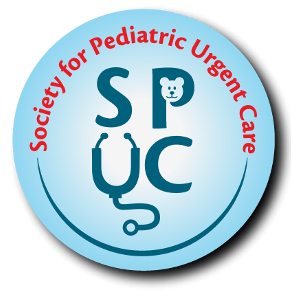Skip to content
ALERTS
Peritonsillar abscess
Retropharyngeal abscess – <4yrs
Epiglottitis
Foreign body
Trauma
AGE CONSIDERATIONS
Strep pharyngitis risk – >2yrs
DIFFERENTIAL DIAGNOSIS
Viral pharyngitis
Herpangina
Coxsackie
GABHS pharyngitis
EBV
Post-nasal drip
Gonococcal pharyngitis
Chlamydia pharyngitis
Peritonsillar abscess/cellulitis
Retropharyngeal abscess
GERD
Epiglottitis
PFAPA syndrome (Periodic fever, Aphthous ulcers, Pharyngitis, & cervical adenitis)
Pharyngeal Foreign Body
EVALUATION
HISTORY
Onset and quality of pain, associated fever, timing, URI s/sx, malaise, headache, abdominal pain/vomiting, associated neck pain
PHYSICAL EXAM
HEENT: otoscopic findings, oropharynx, neck, lymph nodes
Abdomen
Skin
DIAGNOSTIC FINDINGS
Pharynx: erythema, edema, exudate, uvular positioning, lesions, strawberry tongue, palatal petechiae, trismus
Neck/Lymph: ROM, lymphadenopathy
Abdomen: tenderness, assess for splenomegaly
CONCERNING FINDINGS
Peritonsillar/Retropharyngeal abscess: assymetry, uvular deviation, trismus, drooling
EBV: splenomegaly, ill appearing
Epiglotitis: tongue protruding, drooling, tripod-sit, ill appearing, anxious
Foreign body: airway compromise,
DIAGNOSTIC TESTS
LAB TESTS
Rapid strep
Throat culture
Viral throat culture
Monospot, EBVserology (IgG, IgM)
CBC
IMAGING
Lateral neck xray
CT – neck
MANAGEMENT
TRANSFER/ADMISSION CONSIDERATIONS
Significant tonsillar edema with concern for progression to airway compromise
Peritonsillar or Retropharyngeal abscess
Dehydration
Foreign body
Epiglotitis
Trauma
COMPLICATIONS
Peritonsillar and retropharyngeal abscess
Uvulitis
Cervical lymphadenitis
Otitis Media/Mastoiditis
Acute rheumatic fever, acute post-streptococcal glomerulonephritis, and acute post-streptococcal arthritis – with Group A strep
EBV-induced reactive arthritis
Vascular injury (trauma)
PEARLS AND PITFALLS
Tonsillar lymphoma – asymmetrical enlarged tonsils without signs of infection
Small tears in penetrating oral trauma usually do not require repair but prophylactic antibiotics are needed
Oral daily penicillin used to prevent recurrent acute rheumatic fever
Frequency of tonsillitis needed for tonsillectomy are >6 in the previous year, >5 in the 2 preceding years or 3 episodes per year for 3 years
VIRAL PHARYNGITIS
TREATMENT
Supportive
Fever and pain reliever
Push fluids
Complementary & Alternative Therapies
Salt water or Listerine gargles
Surgery / Other Procedures
FOLLOW UP
Anticipatory Guidance
Pain reliever
Typical duration of sore throat is 7-10 days
Typical duration of fever is 3-5 days
Signs and Symptoms to return
Persistent fever, sore throat, fatigue/malaise
Decreased urine output
Increasing pain
Trismus, drooling
Activity, Diet
Activity as tolerated
PROGNOSIS, COMPLICATIONS
Typically self-resolves
Can progress to peritonsillar or retropharyngeal abscess
GABHS PHARYNGITIS
TREATMENT
First Line
Penicillin VK
Amoxicillin (40-50 mg/kg divided BID for 10 days)
IM Penicillin G
Second Line
Erthromycin/Azithromycin
Cephalexin (5% cross reactivity with PCN allergy)
Clindamycin
Supportive
Fever and pain reliever
Push fluids
Complementary & Alternative Therapies
Salt water or listerine gargles
Surgery / Other Procedures
Tonsillectomy if recurrent infections
FOLLOW UP
Anticipatory Guidance
Pain reliever
May take 48-72 hours for pain and fever to stop
Signs and Symptoms to return
Persistent fever, sore throat, fatigue/malaise
Persistent vomiting, decreased urine output
Increasing pain
Trismus, drooling
Activity, Diet
No school/work until 24 hours on antibiotics
Activity as tolerated
Increase fluids
PROGNOSIS, COMPLICATIONS
Typically responds well to antibiotics
Can progress to peritonsillar or retropharyngeal abscess
Can progress to acute rheumatic fever if untreated
REFERENCES
Hayden GF, Turner RB. Acute pharyngitis. In: Kliegman RM, Behrman RE, Jenson HB, Stanton BF, eds. Nelson Textbook of Pediatrics . 17th ed. Philadelphia, PA: Saunders Elsevier, 2004.
Pantell R. Pharyngitis: Diagnosis and Management. Pediatr. Rev ., Aug 1981; 3: 35 – 39.
Pichichero M. GroupA Beta-hemolytic Streptococcal Infections. Pediatr. Rev ., Sep 1998; 19: 291 – 302
Yellon R, McBride T, and Davis H. Otolaryngology. In: Zitelli B and Davis H. Atlas of Pediatric Physical Diagnosis, 5th ed. Philadelphia, PA: Mosby Elsevier, 2007:921-925
ADDITIONAL RESOURCES
Paradise J, Bluestone C, Colborn DK, Bernard B, Rockette H, and Kurs-Lasky M. Tonsillectomy and Adenotonsillectomy for Recurrent Throat Infection in Moderately Affected Children. Pediatrics , Jul 2002; 110: 7 – 15
Tanz R, Gerber M, Kabat W, Rippe J, Seshadri R, and Shulman S.
